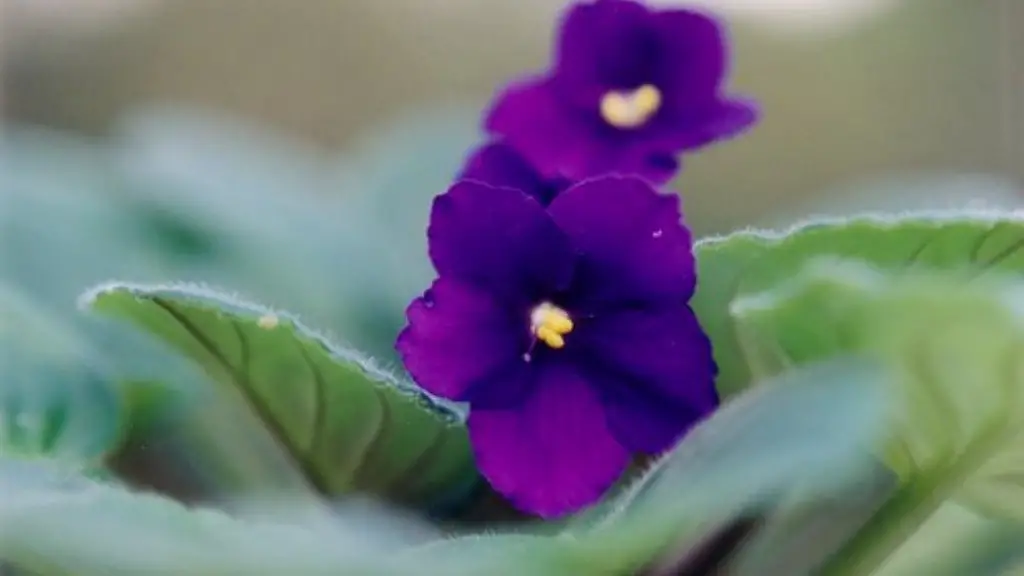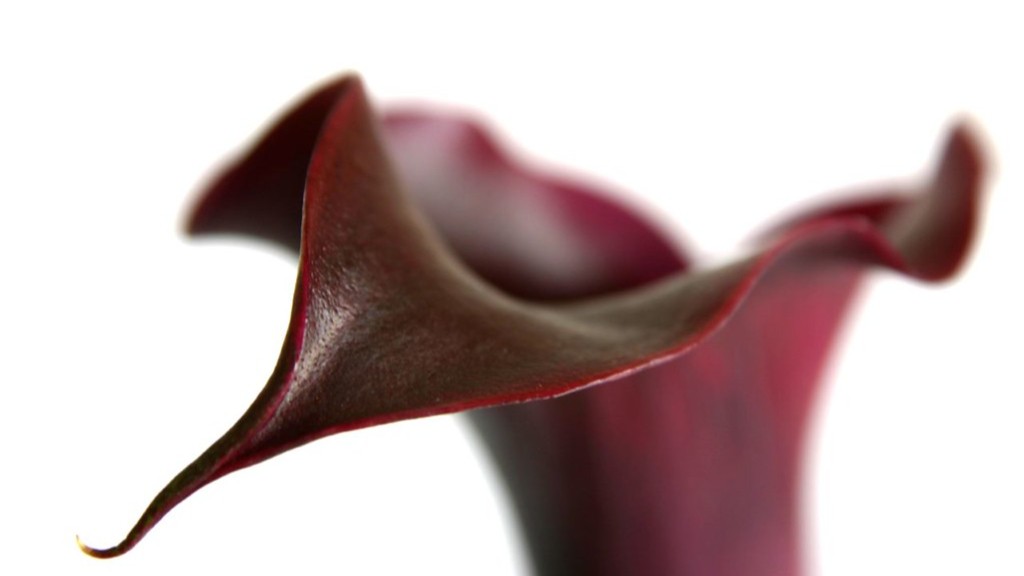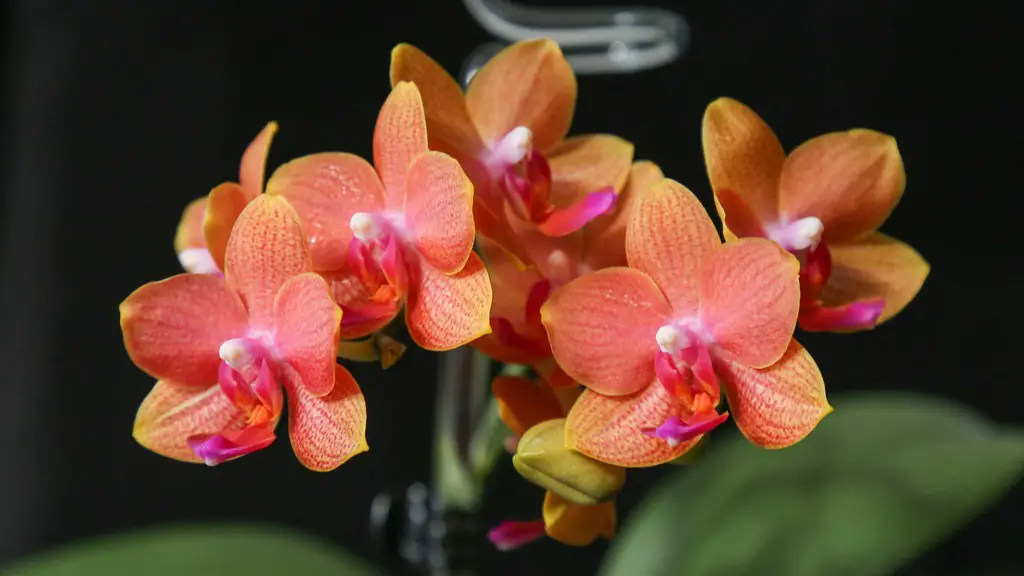In this video, we’ll show you how to split African violets. African violets are one of the most popular houseplants, and they’re easy to care for. One of the best ways to keep them healthy is to split them when they get too big. African violets can be split into two or more plants, and you can even propagate new plants from the leaves.
To split African violets, you will need to carefully divide the root ball of the plant. You can do this by gently pulling the plant apart with your hands, or by using a sharp knife. Once you have divided the root ball, you will need to replant each section into its own pot. Be sure to use fresh potting soil, and water the plants well.
How do you split African violets?
To split African violet babies or pups from the plant, just cut them off from the main stem of the plant and pot them in their own soil. They will grow their own roots soon and turn into a new plant.
When you see that your African violet has doubled or tripled in size, and the leaves are starting to wilt, it’s time to repot the plant into a larger pot. This will prevent the plant from getting too root-bound. You don’t need to rush to repot the plant, but keep an eye on it so you can make the move when necessary.
Do African violets like to be crowded
It can be a bit of a challenge to find the right balance when it comes to African violets and their potting. They like to be a little crowded above ground, but if they are too crowded below ground they can start to struggle. In fact, an African violet with too many leaves might even withhold its beautiful blooms—or stop growing altogether!
If you want your African violet to look its best, take care to cut the stem as close to the stalk as possible, without digging into your plant. Alternatively, you can pinch the leaves off with your fingers. African violets grow from the crown out, meaning the leaves closest to the soil are the oldest.
Is it better to root African violets in water or soil?
African violets are relatively easy to root in water using a leaf. The quickest and easiest way to do this is to take a leaf from your existing African violets, or even from a friend’s plant. Simply place the leaf in a cup of water and wait for it to roots to form. Once the roots are established, you can then transplant the African violet into soil.
It is important to take care of your African violet in order to make it last a long time. You should avoid overwatering, chilling, and direct sunlight. These three things can reduce the lifespan of your African violet.
Can I use regular potting soil for African violets?
African violets prefer slightly acidic conditions, between 58 to 65 pH. In conventional soil, your plant won’t be able to efficiently absorb nutrients. Generally, peat moss is used to lower the pH in African violet potting soil.
Here are some tips for watering African violets:
-It is important not to use cold water; lukewarm or warm is preferred
-If you water from the top, be careful not to get water on the leaves when the plant is in the sun; this is to avoid leaf spots
Do African violets need deep pots
African violet roots don’t go very deep; they like to go sideways, so don’t use a deep pot. Your pot must have suitable drainage holes so you can water from underneath. You can also get African Violet specific pots that have a terra cotta sleeve you plant in, and a water reservoir.
African violets are best suited for small self-watering pots, which provide the plants with a steady supply of moisture. African violet pots are usually made of ceramic or plastic, and are 4 to 5 inches in size. By growing African violets in these pots, you can ensure that they will receive the proper amount of moisture.
How often should you change the soil in African violets?
African Violets should be re-potted in fresh soil every 6 months to keep them healthy. It’s best to use the same size pot so the roots don’t have to adjust to a new size.
Afrrican Violets need bright to moderate indirect or filtered light to thrive. They can grow in direct light, but only early in the morning and late in the afternoon. If you place your hand over an Afrrican Violet receiving sunlight and can feel the heat or its too warm, then the light is too intense for the Afrrican Violet.
What time of year do you repot African violets
It is very important to repot your African Violet when it becomes rootbound. By doing this, you will allow the roots to grow properly and the plant to continue to thrive.
When African violets become leggy, it usually means that they are not receiving enough light. Even though these plants can’t tolerate full sun, they still need lots of indirect light. Try moving your leggy plant closer to the window or into a room with more light exposure.
How do you keep African violets blooming?
If you want to keep your succulents healthy, you should provide them with bright, indirect sunlight. Too little sunlight will cause them to stretch for the light and produce few or no flowers; too much sun can burn the leaves. An east-facing window is ideal, especially with a sheer curtain to block the sun’s harshest rays. Your succulents will also need eight hours of darkness every night.
This plant food is great for African violets and other blooming houseplants. It is easy to use and really Gets the plants growing and blooming!
Conclusion
To split African violets, first water the plant well. Next, use a sharp knife to cut the root ball in half, being careful not to damage the root system. After that, pot each half of the plant in its own container filled with fresh potting mix. Place the pots in a bright location out of direct sunlight and water regularly, being sure to keep the soil moist but not soggy. With proper care, your African violets should soon start to grow and bloom.
The African violet is a beautiful and popular houseplant. They are easy to care for and make a great addition to any home. When it comes time to split them, it is important to follow the proper steps to ensure that they continue to thrive. With a little time and patience, anyone can successfully split an African violet.





